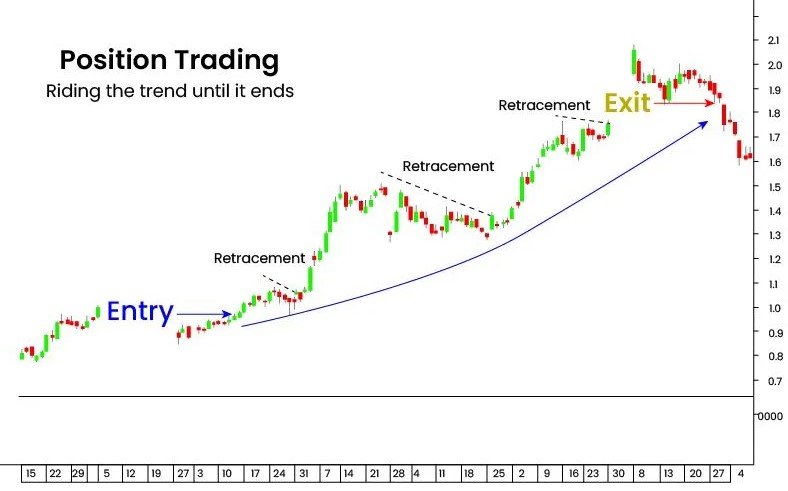Positional trading is a trading strategy that focuses on capturing significant price movements over longer periods, ranging from several weeks to several months. Unlike day trading or swing trading, which involves frequent trades within short timeframes, positional trading requires a patient and long-term approach. In this detailed blog post, we will explore the fundamentals of positional trading, its benefits, key characteristics, strategies, risk management techniques, and essential tips for those looking to embark on this patient and rewarding trading journey.
1. Understanding Positional Trading
Positional trading is based on the belief that certain assets exhibit long-term price trends, and traders can capitalize on these trends by holding positions for extended periods. Positional traders typically use fundamental analysis, technical analysis, and market research to identify assets with strong growth potential.
2. Key Characteristics of Positional Trading
- Long-Term Perspective: Positional traders hold their positions for weeks, months, or even longer, allowing time for the identified trend to develop and play out.
- Fundamental Analysis: Positional traders study the underlying fundamentals of the asset, including financial health, growth prospects, and industry trends.
- Technical Analysis: Traders analyze price charts and technical indicators to identify entry and exit points, confirming their fundamental analysis.
- Lower Trade Frequency: Positional traders make fewer trades compared to day traders or swing traders, as they focus on longer-term trends.
3. Positional Trading Strategies
Positional traders can employ various strategies to identify potential trading opportunities:
- Trend Following: Traders identify assets with strong long-term trends and enter positions in the direction of those trends.
- Value Investing: Traders look for undervalued assets with strong growth potential and hold them until their value is recognized by the market.
- Sector Rotation: Traders rotate their positions among different sectors based on economic cycles and industry trends.
4. Risk Management in Positional Trading
Risk management is crucial for positional traders to protect their capital over the longer holding periods:
- Position Sizing: Determine the appropriate position size based on risk tolerance and account size.
- Stop-Loss Orders: Set stop-loss orders to exit a trade if the asset’s price moves against the expected direction, limiting potential losses.
- Profit Targets: Set profit targets to secure gains once the asset’s price reaches a predetermined level.
5. Essential Tips for Positional Traders
- Thorough Research: Conduct extensive research on assets to ensure a deep understanding of their fundamental strengths and growth prospects.
- Patience and Discipline: Positional trading requires patience and discipline to hold positions for extended periods, even during market fluctuations.
- Diversification: Diversify your portfolio across different assets and industries to reduce risk.
- Monitor Market Conditions: Stay informed about macroeconomic factors, industry trends, and geopolitical events that can impact your chosen assets.
6. Advantages of Positional Trading
a. Reduced Stress: Positional trading involves fewer trades and allows traders to avoid the stress of monitoring markets constantly.
b. Capitalizing on Long-Term Trends: Positional traders have the opportunity to ride significant price trends, potentially achieving substantial profits.
c. Flexibility: Positional trading can be adapted to various asset classes, including stocks, forex, commodities, and ETFs.
d. Compatibility with Other Commitments: Positional trading allows traders to manage their portfolios alongside other personal and professional commitments.
Conclusion
Positional trading offers a patient and strategic approach to navigating financial markets. By identifying long-term trends, conducting thorough research, and applying sound risk management techniques, positional traders aim to achieve consistent success over extended holding periods. The reduced stress and compatibility with other commitments make positional trading an attractive option for many traders seeking a less time-consuming and more patient approach.
However, positional trading requires unwavering discipline, as traders must resist the temptation to make impulsive decisions during market fluctuations. Through diligent research, disciplined execution, and a long-term perspective, traders can embrace the opportunities that positional trading presents and potentially enjoy the rewards of long-term market success. Remember, the key to success in positional trading lies in patience, analysis, and a steadfast commitment to riding the waves of long-term market trends.
